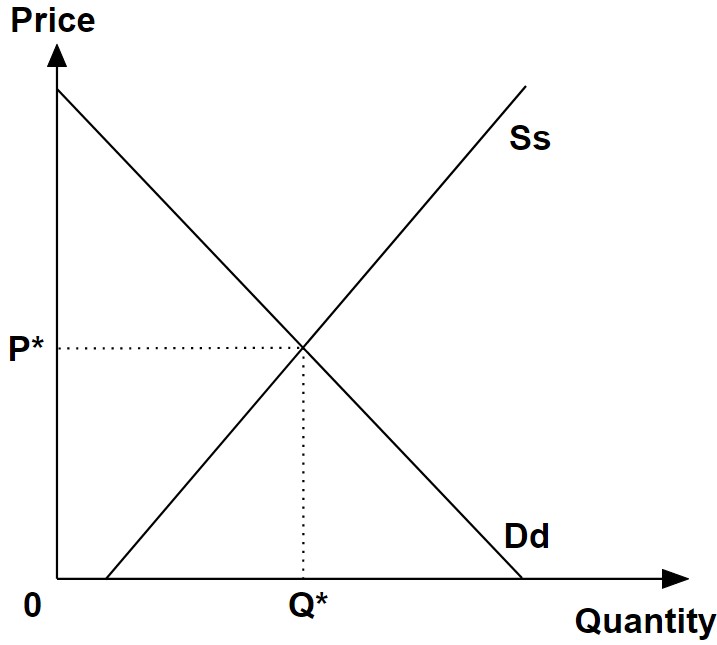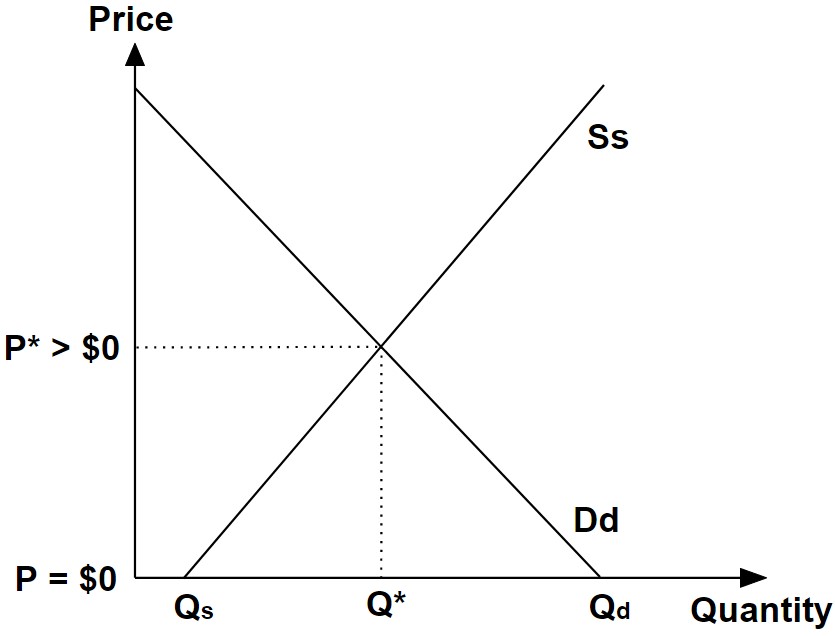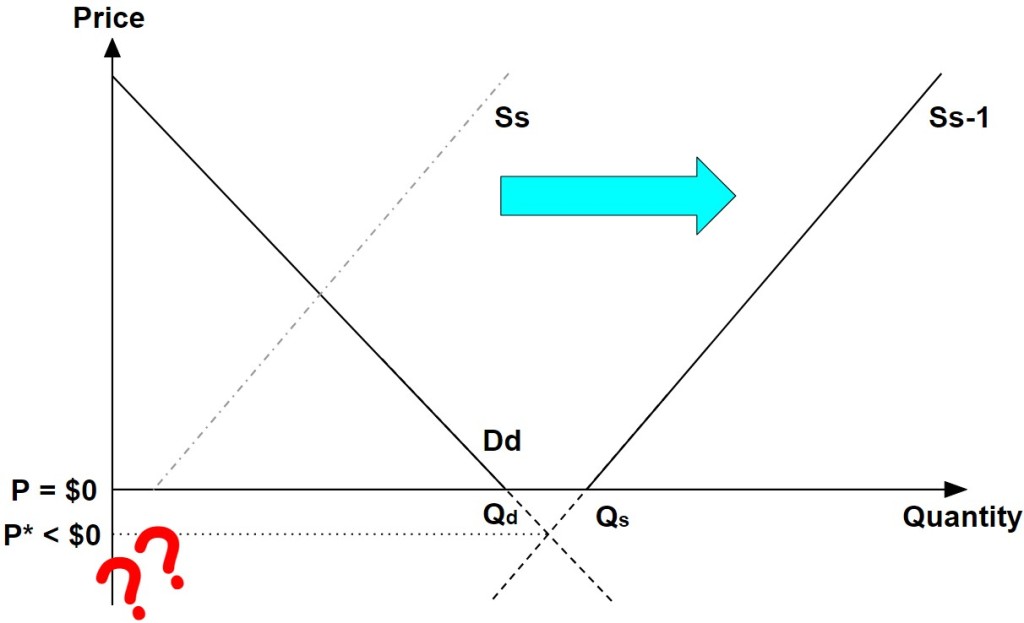A subscriber posed me this question recently:
Please help me understand the Definition of “Economic Good” … it states “… a scarce good where quantity demanded exceeds quantity supplied at zero price.”; I am unsure what “zero price” means in this context. Isn’t an economic good almost anything? Zero price, of course demand exceeds supply. … Thus I’m confused. On the other hand, the opposite being “Non-Economic Good” is defined as goods in abundance, unlimited supply … Thank you!
Economics is a discipline that concerns allocation of resources under scarce conditions and the transactions that follow (i.e. exchange of goods).
In simple terms, under market conditions, economic transactions take place where there is demand for a good, and corresponding supply exists for it.
Conveniently, as most of us know, when expressed in terms of price and quantity as the opposing axes, the demand and supply functions are typically depicted as decreasing and increasing functions respectively. The main reasons of which may be found in my free notes here.
The result of having diametrically opposed slopes necessarily means that both functions would intersect at some point on the graph, which, results in the determination of the equilibrium market price and quantity:

We tend to take things for granted that this, and this only, is the only representation of the demand-supply diagram we should ever see. And that’s not entirely wrong, for good reason.
An Economic Good has a viable price.
We can add more details to the diagram, to flesh out the subsequent arguments we will make:

In particular, there are 2 key observations we can see from the above diagram:
- The equilibrium price is P* > $0; and therefore
- When P = $0, Qd > Qs
In other words, an Economic good is a good with a viable price – a price that is positive, because a negative price just wouldn’t work well with basic Economics.
A Non-economic Good doesn’t have a viable price.
Consider the case of an absurd amount of supply being added to the good. Imagine a massive windfall of the good from nowhere that causes an inordinate rightward shift of the supply curve:

If the consequent demand-supply diagram “looked strange”, it is simply because the equilibrium price is now less than $0. Intuitively, this is the result of an excess in supply that results in such abundance that a price is no longer relevant in such a market to allocate resources for production.
In other words, the 2 observations we make for such a good is now:
- The equilibrium price is P* < $0; and therefore
- When P = $0, Qd < Qs
And that in essence, summarises what a non-Economic good is: A good that is in such abundance that a viable price doesn’t exist for it in the market.
Negative price doesn’t mean “no price”.
Differentiating between Economic goods and non-Economic goods doesn’t make sense in many circumstances.
At first glance, a price solution that is negative per the demand-supply diagram suggests that the good in question is a “non-Economic” good and therefore doesn’t conform to what Economists should study.
This isn’t true. In a strict sense, a negative price is the result of sellers willing to pay money to sell a good. And there’s little reason to dismiss this as “non-Economics” all the time.
Take for example, the case of the oil market at the height of the pandemic. Being unable to sell oil to refiners who struggled to find willing buyers, meant that crude oil storage simply ran out and crude oil sellers were actually willing to pay to sell crude oil, and avoid oil from being produced with nowhere to go at all. This manifested temporarily as negative price in oil, but there was nothing “non-Economic” about the oil market otherwise.
Therefore the distinction between “Economic” and “non-Economic” goods is more relevant to longer periods of reference where the “true” market price can be discerned stably.
In that narrower sense therefore, our subscriber was right to posit that “Air is non-economic good whereas a Table or a Dancing Class is economic good“.

This is helpful, thank you for your diagrams, live examples and references to theory!
LikeLike